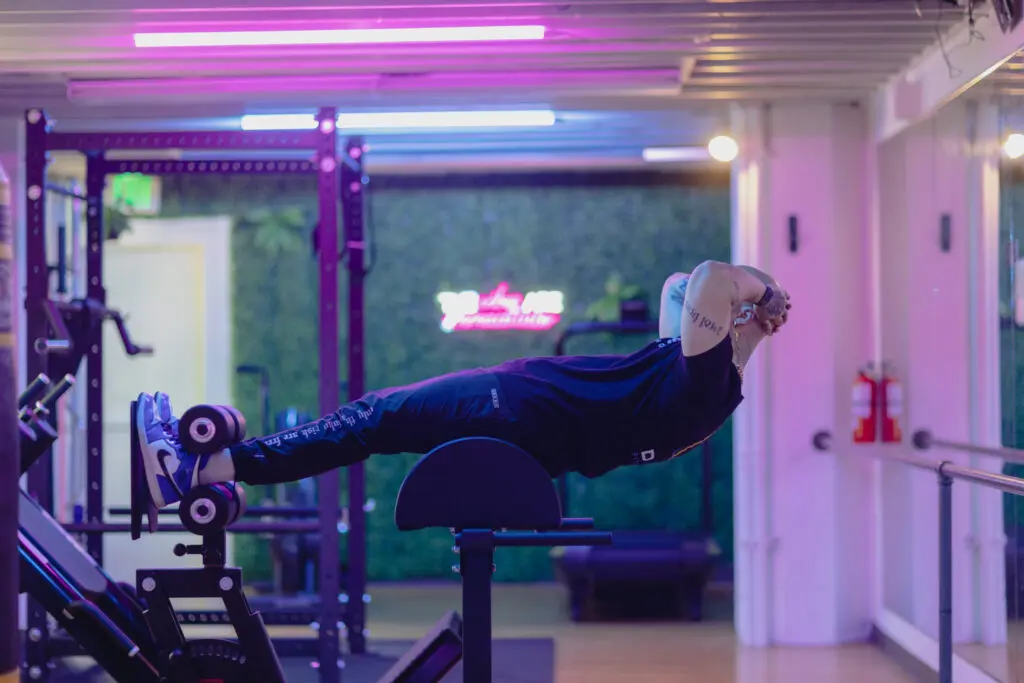HOW HARD SHOULD I TRAIN?
Have you ever asked yourself “am I training hard enough?”. Well today we are going to talk about training intensity. How hard should you be training, when should you train less hard, what is the goal behind each?

If you’re anything like my clients you may have taken a group exercise class and been dripping in sweat. In some contexts you could have worked till you look like we attacked by a group of middle schoolers with water balloons and still not done enough to create the change in your muscles you’re looking for. So let’s start by identifying different goals so you can determine if you’re working efficiently toward yours.
Goals
Alright lets cover a few general goals and lump them into specific categories
- Skill Specific (Learning a sport or perfecting a movement)
- Build Muscle
- Build Strength/Speed/Power
- Build Endurance
- Drop Bodyfat
While you might have goals that are a bit more specific than these, they will likely fall into some subdivision of these categories.
Training Intensity – Skill Specific
For skill specific drills you want to do enough work that the movement becomes challenged but not so much that the movement breaks down. Imagine trying to learn to throw and accurate fastball (this would be specific to baseball). If you throw the ball once you probably won’t get great at throwing a fast ball. If you throw it to the point where you are no longer precise and the ball is actually starting to move more slowly then we’ve likely overdone it. This is like trying to cook the perfect over easy egg. Don’t cook it enough you wouldn’t want to eat it. If you cook it too much, well, now its fried. We want to stop as soon as we just start to lose accuracy and speed.
Build Muscle
To build muscle there is a lot more to it than just intensity. But we’re just here to talk about how hard to train. As it pertains to how difficult your exercise should be we want to fall within 3-4 reps from failure. That means on a prescribed set of 10 reps you should be able to do no more than 14 reps. The closer you are to failing at 10 reps the closer you would be to “true failure”. If you did 10 reps and could have done 16 reps you are not training hard enough. If you want to learn more about what helps to get consistent results check out this blog here.
Build Strength/Speed/Power
Okay, so these are interesting. In order to build these up there is a skill related component. So, we want to focus on improving the relative skill of the specific movements in which we want to improve strength/speed/power. We can dive into each of these specifically at some point but not in this article. However building these characteristics is also going to be relative to how long you’ve been training.
When you’re brand new to weightlifting your training intensity can be as low as 40% of your 1 Rep max and improve your 1 Rep Max (the weight you could only lift one time). Where as when you become more advanced you’re going to lift heavier weights potentially 80% or higher to see your 1 rep max move any where. That being said as you start it’s more important to focus on technique and as you become more skilled you can increase the relative intensity.
Build Endurance
Again we reach a point where this would be more specific to the type of endurance required. Repeated bouts of faster speeds like in soccer do require lots of endurance. This is not the same endurance or aerobic capacity required you would need to finish a marathon. So training for one might help to improve the other, it would still miss the mark in creating optimal performance for either one. So knowing how hard you should train for these is about the relative intensities you’ll achieve during each activity. Consistently keeping your heart rate at the 70-80% range for the duration of your training might be good for slower but longer duration activities. If your event is more of a repeated bout at higher intensities you might aim for the 75-90% range but add rest between rounds.
Drop Fat
This is going to sound ridiculous but not much intensity is required for you to drop fat. What’s most important is that you are eating fewer calories than you consume. Activity can help to improve the amount of calories burned but we should focus more on maintaining tissue that burns calories. For this reason I suggest that you train like you are trying to build muscle while working to drop fat. Because training to build muscle also helps to preserve muscle during a period of dieting. So refer to the “Build Muscle” section for training intensities for dropping fat.
With all this I know there are various things that can limit how are we train. Things like pain, stiffness, discomfort. I wrote and ebook “Movement Freedom” that you can have for no cost to you. I want to see you get the best results possible so I only ask that you share your results with me.
I hope this informs you on how hard you should train just from the intensity side of things. We didn’t talk about how we should program this sort of training so there are limitations here. I’ll leave that for another blog. Feel free to send any specific questions you might have to [email protected].
Stay Dope,
Steven Davis (Owner of Davis Fitness Method)

